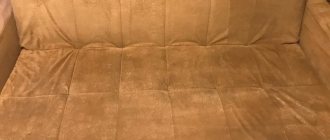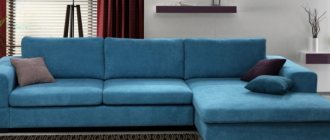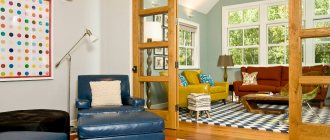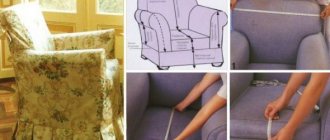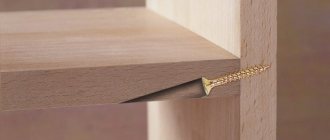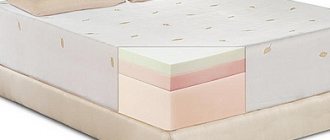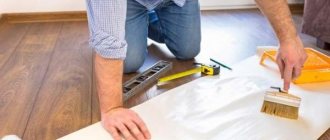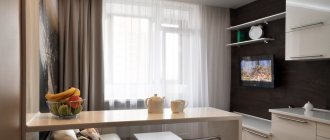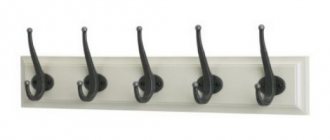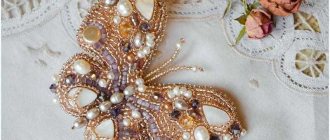A non-woven material with a synthetic base and soft pile that looks like velor is called flock. It is not always 100% synthetic, but man-made fibers predominate. Flock fabric is used as upholstery and for making clothing. Flock fabric for furniture has many advantages over velor and other pile materials. The main thing is that it costs less and is durable. Flock, like a number of furniture fabrics, is characterized by increased density, although some types of fleecy fabric are elastic, soft and thin.
What kind of material
Let's figure out what kind of material this is. According to the description, the material is similar to velor. However, flock is not exactly a fabric, but a non-woven material. Flocking is a technique for applying textile waste to a base fabric. The result is a voluminous and fleecy material, which is considered an ideal fabric for furniture and carpets.
The flocking method itself was developed in China, but the name of the material is European. Translated from English, “flock” is a “piece” or “bundle,” which explains the nature of the appearance of the material. It was from cotton or wool that the material was originally made. Modern varieties are made from mixed fiber or synthetics.
The material became popular as an anti-vandal fabric - furniture upholstery that can resist cat claws. Flocked matting is in demand in the furniture business. It is affordable and looks aesthetically pleasing.
Which fabric is better - flock or velor when it comes to upholstery material? The first type is cheaper, the second is more reliable. It is believed that flock is a material that can delaminate over time if the textile fibers separate from the surface of the base. But modern flocking methods eliminate this risk. However, you should focus on the composition of the material in order to extend its service life. Thus, alcohol-containing compounds are dangerous for synthetic fabrics and lead to their damage.
When it comes to design, flocked material is superior to wool blend velor. This is a fabric that can have any color, additional embossing, selective flocking and different volumes of pile. For upholstery of furniture and in interior design, such fabric is indispensable.
Reviews
About ten years ago, my husband and I bought a large sofa. Canadian flock was chosen as the upholstery. We were very pleased with our choice. Over this long period of time, the material has hardly lost its properties. We vacuum about once every three to four weeks and that’s it. The fibers are not wrinkled at all, there are no gaps. I didn’t know anything about this material before, but here I came across it, as they say, in practice. In general, flock is an excellent choice for those who value quality and want to save money.
Marina Ignatova (Cheboksary)
In our apartment in the kitchen there is a small corner sofa with flock upholstery. I am extremely pleased with it: stains and any dirt can be easily removed with an ordinary soap solution (diluted dish detergent) and a soft sponge. A child once spilled compote, so I immediately wiped it with an ordinary rag; the liquid didn’t even have time to be absorbed. Very practical material.
Svetlana Golyanova (Voronezh).
My wife and I purchased some good upholstered furniture covered in phlox from a catalogue. One day our son drew some “doodles” on the chair with his colorful markers. My wife was upset at first about this, but then decided to use regular wet wipes to remove the marks. She was very surprised when not a trace of “childish pranks” remained on the coating.
Alexey Borisov (Kaluga).
Originally posted 2017-12-21 07:16:08.
Compound
In earlier times, prototypes of flock fabrics were of natural origin. Textile waste was glued with resin, resulting in an environmentally friendly and natural material.
Flocking in its current form became widespread in America in the second half of the 20th century. There are 4 types of fibers used as the basis of flock: polyester or nylon, cotton, viscose. For the top layer, polyamide fiber is predominantly used. Acetate and polypropylene are also suitable for flock material. They are attached to a mixed base, for example, 65% nylon and 35% cotton. Such canvases are characterized by low performance characteristics, but are cheap.
When is flock better, and when is chenille?
Before choosing suitable upholstery for future furniture, you need to assess how intensively it will be used and for what purposes it will serve.
Important! It should be remembered that the sofa should be in harmony with other interior items and at the same time be the central item in the room. It is to match its color that curtains are chosen, walls and floors are finished.
Flock and chenille are excellent upholstery options, but their features must be taken into account when choosing upholstered furniture.
Which boots are better, suede or leather?
DIY thread flowers
Types and their properties
The area of its application depends on the type of fabric. Flock upholstery is available in different pile lengths and different bases. In this regard, the following are highlighted:
- flock on matting is a fleecy material with a matting base. Such upholstery fabrics are produced with selective flocking, since the matting itself is considered a full-fledged material for upholstering furniture;
- flock on flock - an option where the fleecy surface is applied in two layers, which is why the fabric turns out voluminous;
- Anti-claw flock is a dense and mechanically resistant material that can withstand the pressure of pets. One of the most durable and popular furniture flocks;
- Teflon flock - known as courtesan. Comes with Teflon coating, which increases resistance to stains and makes cleaning easier;
- flock IQ is essentially the same anti-vandal fabric or anti-claw. Flock IQ has additional impregnations that increase the strength of the material and increase its resistance to dirt;
- flock on organza is a transparent material with partial flocking that forms patterns. Suitable for curtains and drapes;
- Alcantara or car flock is an expensive type used when reupholstering a car. Similar to velor or suede fabrics. Flock fabric under natural Alcantara is cheaper and pleases with a rich palette - white, gray, black flock, as well as brown and beige flock are on sale.
Production
Flock production
The technology of flock production is very interesting. The woven base, which moves slowly along the machine, is treated with a special adhesive. Above the machine there is a hopper that throws out electrified fluff particles. Due to electrical conductivity, the fibers fall onto the adhesive base strictly vertically and very close to each other, which ensures uniform coverage.
The length of the fibers and the tightness of their fit determines what kind of fabric will turn out, soft or hard. A high-quality material should have a straight pile, equal in length, densely packed, and the ends of the fibers should not be fused together.
The pile can be ground or cut. In the first case, the fibers are ground in a special device. The fibers have different lengths, and the flock turns out to be similar to suede. In the second case, the fibers are folded into bundles and cut evenly, resulting in the fibers having the same length.
You can also dye flock in two ways: before and after cutting the threads. The technological process is completed by treating the flock with a special protective compound, which adds shine and improves the characteristics of the material.
Advantages
The material is considered soft, pleasant to the touch, and resistant to stains. Due to its synthetic composition, the fabric is more often used in the manufacture of interior items, accessories and shoes, rather than for clothing in contact with the body. But flocked products cope with their functions excellently. They withstand mechanical stress, friction, and moisture.
The advantages of matter include:
- wear resistance and durability;
- resistance to deformation and rolling;
- moisture-repellent properties;
- resistance to pollution;
- wide design possibilities;
- ease of care;
- breathability;
- holds color well and does not fade;
- has a high density;
- It's cheap.
How fabric is made
The creation of the material does not require large expenditures and occurs due to the transfer of nylon pile under the influence of an electrostatic field. This action is called flocking. Note that the basis of the future fabric is natural cotton and polyester. It is often used to imitate protective materials such as velor, suede, and chenille. Thanks to the use of different piles, this effect is achieved.
Worth knowing! It is noteworthy that the flock is almost impossible to tear, it is not afraid of dirt and does not lose its original appearance.
Application area
Flock is classified as a furniture fabric, although curtains, carpets, and car covers are made from it. The fabric is suitable for making toys, shoes, and clothing. Thus, thin varieties with patterns are suitable for dresses, and dense types with moisture-resistant impregnations are suitable for boots.
Let's take a closer look at flock furniture fabrics. They are recommended for reupholstering chairs, armchairs, and upholstering soft elements of beds. On a sofa with a “book” or “accordion” system, a corner or pull-out model, fleecy upholstery fabric is extremely suitable. Anti-claw flock will help pet owners. Sofa models with Breeze flock upholstery, also known as IQ, have gained popularity.
For car seat covers and corner sofas, impregnated flock is more suitable than other fabrics because it has high strength and abrasion resistance.
Story
Flock is far from being a modern invention. The secret of making fleecy fabric was known to the craftsmen of ancient China. Resourceful craftsmen lubricated the finished canvases with resin, leveled them, and then covered them with a layer of cut threads and scraps of fabric.
Flock as a textile in the modern sense appeared in the 50s. last century in the USA, when the problem of recycling a huge amount of waste arose. Then it was invented to shred textile waste and stick it on the material. The new type of fabric was liked not only by manufacturers, but also by many furniture makers. They quickly appreciated the strength and ease of maintenance of the material. And soon flock became one of the most popular types of textiles.
Care
The material is considered not picky and easy to clean. In some cases, it is possible to do without washing - the dry method is sufficient. Furniture fabric can be refreshed with a soap solution, or rather with thick foam, the remains of which are removed with a vacuum cleaner. Lemon juice will help remove food stains. It is diluted with water, the stain is treated, and then removed with a sponge. Dishwashing gel will help remove grease stains. The product is foamed, passed over the stain, and soaked with a dry cloth or paper towel.
If we are talking about flock clothing, then washing in a washing machine is allowed. A mode for synthetics and a gentle detergent are suitable. The product cannot be wrung out, and the item must be turned inside out before washing.
It is important to remember some taboos for flocked fabrics:
- Dry cleaning is prohibited unless otherwise specified by the manufacturer;
- cleaning with solvents and alcohol-containing compounds is unacceptable;
- Before cleaning with foam or soap solution, be sure to remove dust using a dry method: with a brush, vacuum cleaner, etc.;
- It is prohibited to dry clothes and other products made from flocked fabrics on heating devices.
Dear readers of the Tkan.Club website, if you still have questions on this topic, we will be happy to answer them. Leave your reviews, comments, share stories if you have dealt with this material! Your life experience may be useful to other readers.
Disadvantages of flock sofa upholstery
The positive aspects listed above are found mainly on expensive products. If the quality is not at a high enough level, then you may encounter some disadvantages, which include:
- If inexpensive technical glue is used in production, then during operation chemicals harmful to health .
- A significant disadvantage is the tendency to electrify . Therefore, the sofa can become a real dust collector, attracting small debris. People prone to allergies should avoid this type of coating.
- If the resulting stains are not removed immediately, then after they dry, it is very difficult to get rid . In addition, strong friction can easily damage the soft surface, resulting in noticeable bald spots.
- The next disadvantage is the tendency to absorb various odors . Therefore, such furniture is definitely not suitable for a small kitchen.
- A person who spends a long time on such a surface may sweat . Flock is not a breathable material, so discomfort may occur. This is especially noticeable on hot summer days, which is not very pleasant.
Making a flocker with your own hands
A flocker is a device that allows you to give a surface a fleecy appearance using flock (fine chopped pile, in our case grass). The essence of flocking is to ensure that the fibers stand perpendicular to the surface with glue.
Using it and special static grass, you can create a neatly seeded lawn, bushes and much more. Static grass is available for sale in different colors and sizes to suit any need. One of the options for static grass can be viewed HERE.
To make a flocator you will need the following:
- electric fly swatter (I have a version that runs on two AA batteries; there are options with other batteries or rechargeable batteries that are charged from an outlet);
- metal strainer;
- crocodile clip;
- the wire.
The following tools and materials may also be required:
- a screwdriver to disassemble and assemble the flocator;
- knife to strip wires;
- wire cutters to cut wires;
- pliers;
- soldering iron to securely solder the wires;
- heat shrink tubing and electrical tape for insulation;
- tin and flux for soldering;
- a bur machine with a cutting disc to cut off the excess length of the strainer handle;
- glue gun for fixing the strainer inside the flocator handle or super glue.
This amount of tool is excessive; if desired, you can get by with less.
- You need to disassemble the fly swatter (Before disassembling, the fly swatter must be de-energized!) to remove the upper, unnecessary part.
- Next you need to disconnect the top part and cut the wires that go to it. There are three wires: red and two black. The red one will go to the outside, which will join the pad, and the two black ones will be twisted together and soldered to the strainer.
- You need to try on the strainer. I didn't have about a couple of centimeters to fit, so I sawed off the excess. When using a drill and similar tools, remember to wear safety glasses.
- Below is shown approximately how the strainer will be positioned.
- You need to solder black wires to one of the legs. If you want to insulate them with heat-shrinkable tubing, you need to put them on before soldering. After the main contacts are soldered, you can solder the alligator clip. In principle, you can get by with a simple winding, but I soldered it for reliability.
- Now you need to carefully check that the device is working. To do this, you need to turn on the device, apply a charge (press the button on the body) and discharge it onto the strainer (touch the strainer with the clamp, while holding the wire, and not the clamp itself). If there is a spark, then everything is done correctly.
- Next, you need to insulate the wires with heat-shrinkable tubes (they had to be put on earlier before soldering) or electrical tape.
- Next, you need to turn off the power to the flocator and secure the strainer with a glue gun.
- All that remains is to assemble the flocator.
This is the assembled flocker:
You can also watch the entire manufacturing process in the video:
Well, a small video demonstration of the use of a homemade flocker for landscaping a stand:
Read further:
What is flock? composition, properties, characteristics. types of flock, pros and cons. where is it used? how to care for flock?
What is better for a sofa - flock or velor? characteristics of both materials. comparative features of velor and flock.
Dress made of suede on a knitted basis: pattern and step-by-step production
Brownie made from nylon tights master class: how to make a brownie with your own hands, manufacturing technique.
Which is better - microvelor or flock? characteristics of materials. How are they similar, what are the differences between them?
Which is better - flock or faux suede? comparative characteristics of fabrics.
Can flock be washed in a washing machine? washing rules
What is better for a sofa - chenille or flock? characteristics of materials. comparison of sofa upholstery.
How to sew faux suede: how to cut and sew, on a knitted basis
DIY cherry costume for a girl: base, headdress, attributes
DIY mermaid costume: for a girl, base and details
DIY stocking snowman: base, details, decor
DIY strawberry costume for a girl: base, details, decor
DIY angel costume for a girl: basis and attributes
Manufacturing technology
Today there are several ways to obtain fleecy material. However, in mass production, one is used - electroflocking.
It is carried out in several stages:
- Obtaining pile: the material is laid in strands, then finely chopped. Or raw materials (bundles, scraps, threads) are loaded into mills, where they are ground.
- Coloring: carried out at the last stage of cutting or before grinding the raw materials. Paints are selected that are resistant to abrasion, ultraviolet radiation, and detergents.
- Gluing the pile: a sticky composition is applied to the prepared canvas, the pile is treated with special means to make it electrically conductive. High-voltage equipment is charged with flock, and flowability parameters are set to obtain the specified layer thickness and coating density. The fibers are fed strictly vertically onto the material, which eliminates uneven application. In case of defects, the lint is cleaned from the problem area, crushed and used again.
- The finished flock is treated with impregnations to prevent dirt and fading, after which it is dried and rolled into rolls.
What standards are used in production? What do they take into account?
When producing flock, manufacturers are guided by the requirements of GOST 24220-80: “Furniture fabrics. General technical conditions". The standards regulate the resistance of the material to abrasion. For example, 315 g/m2 flock must withstand a minimum of 4,500 cycles before it develops a hole. In fact, this figure is much higher.
Clause 3 of GOST 24220-80 also establishes resistance to abrasion along the plane to be at least 800 cycles. Flock has an indicator in the range from one to four thousand cycles.
Flocking technology involves the presence of formaldehyde. GOST 25617-83. “Fabrics and products made of linen, semi-linen, cotton and mixed. Chemical Test Methods" regulates their permissible level. Research shows that for flock this figure is several times less than the permissible values, which indicates the safety of the material.
